Artem Onyshchuk
He usually creates buildings, but now he has to dismantle their ruins.
Our active volunteer Artem Onyshchuk is an architect by profession. He designed houses, developed the interior of several halls at Okhmatdyt and dreamed of building an analog of London City in the capital.
However, 2022 put this on hold. Architects are now at a low start, waiting for the Victory, which will give rise to a great rebuilding of Ukraine.
And while there is still time, Artem decided to volunteer! We at B50 really appreciate his professional advice. After all, he knows a lot about roofs and can repair the roof himself. He also designed our warehouse in Moshchun, and now he is developing something mega-important (which B50 is keeping secret for now).
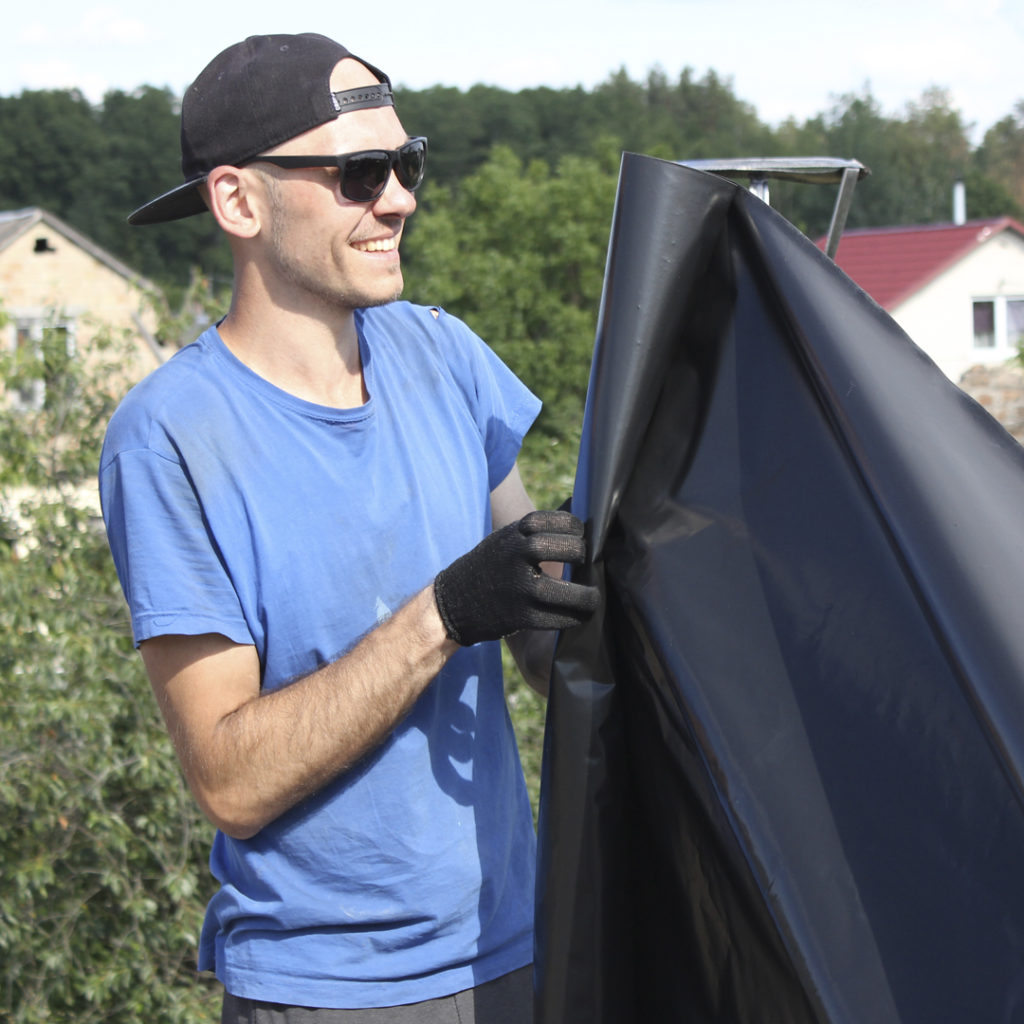
In the #B50heroes interview with Artem Onyshchuk, read on:
- what rules a volunteer should follow to effectively help repair damaged roofs;
- why Artem finds the work of an architect fascinating;
- how he sees Ukraine’s recovery process.
| Name | Onyshchuk Artem Yuriiovych |
| City | Staryi Ostropil village, Khmelnytskyi region |
| Age | 28 years old, birthday – October 27 |
| Profession | architect-engineer, active volunteer at B50 |
| Hobbies | sports, cooking (baking bread) |
| Sea or mountains? | rather mountains, because he has never been to the sea and cannot call himself a traveler at all |
| Childhood sport | volleyball |
| Favorite food | sweet, would sell his soul for a cake |
— Artem, where were you on February 24? How did you know that russia’s large-scale invasion of Ukraine had begun?
— My wife woke me up. She said she could hear explosions. I didn’t even realize it at first (I am one of those people who didn’t believe until the last moment that the war would start. I didn’t understand and still don’t understand why the war had to start). And then I personally heard several explosions. We were in Kyiv at the time, living along Kharkiv Highway near the Park of Partisan Glory. There is a strategic facility nearby and, as I understand it, it was there that the planes were landing.
My wife’s aunt lives near the Kharkivska metro station. We called her and decided that we would all be together while we went to visit her with our daughter. On the night of February 24-25, a rocket was shot down over Pozniaky (Kyiv district – ed.). It fell on a house not far from us. And we decided that we should go to my grandmother’s house in Khmelnytsky region, but I would stay in Kyiv.
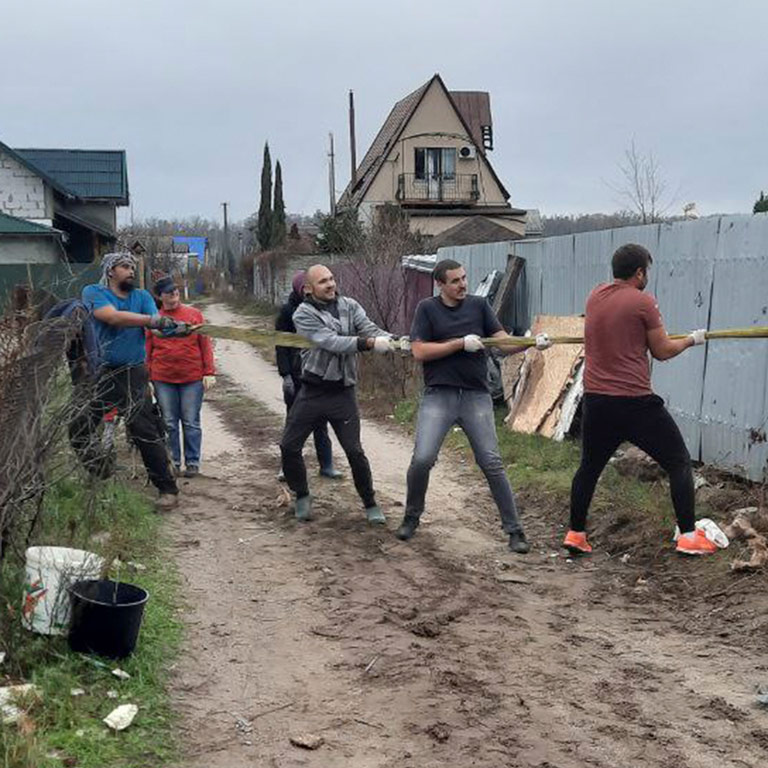
At first, I was in prostration. I didn’t know what to do, so I joined various chats, looked to see if anyone needed help somewhere.
— You joined and accidentally found the famous B50 Volunteers chat?
— I was looking for different telegram channels about the volunteer movement. Adele somehow added me to the B50 channel. I followed it for a week and saw that everyone was traveling, volunteering, doing something. When I was in a state of confusion, there was a person who pushed me and said, “Why are you sitting there? It was my wife. And I thought: “What am I waiting for?” I should join, there is no work anyway.
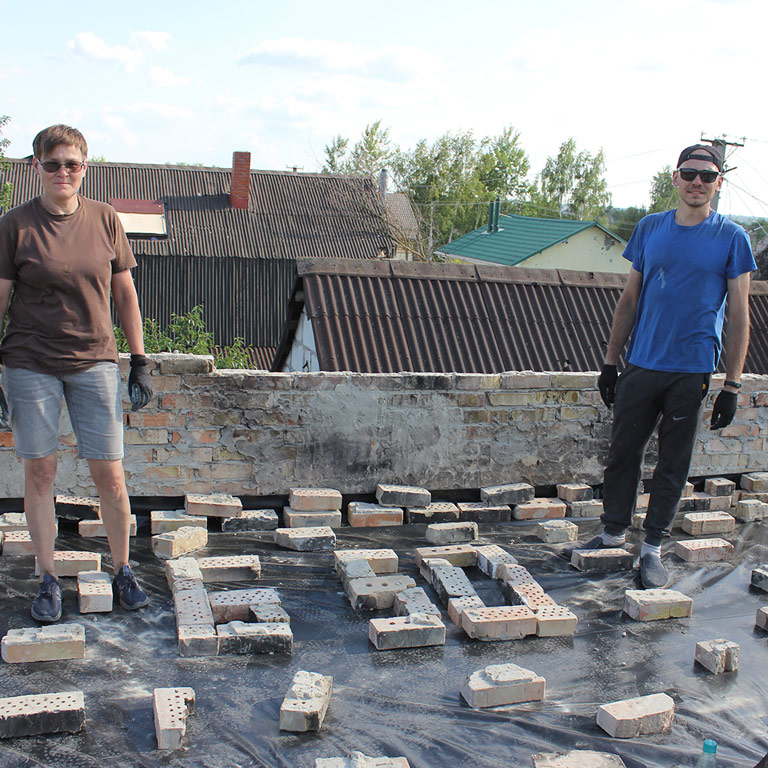
— We interrupted the interview because your daughter called you. Are she and your wife somewhere far away now? What kind of father are you? For some reason, I think a very good one…
— My wife and daughter are abroad. I sent them to my mother-in-law, who lives in Italy. The uncertainty of today contributed to the decision to leave.
My daughter is 4 years old, her name is Varvara. Being a dad is great. When I was growing up, I had no contact with children. And with my child, I realized what children are. You look at her: she was very small recently, she could fit on your hand from palm to elbow, and she is growing, getting bigger and bigger. Before the war, we used to play together all the time. My daughter likes me to carry her in my arms.
I am a good policeman who is always on mother’s side. Because my daughter likes to blow her brains out (especially to her mother), and I feel sorry for my wife. Dad is a pillow to beat, figuratively speaking.
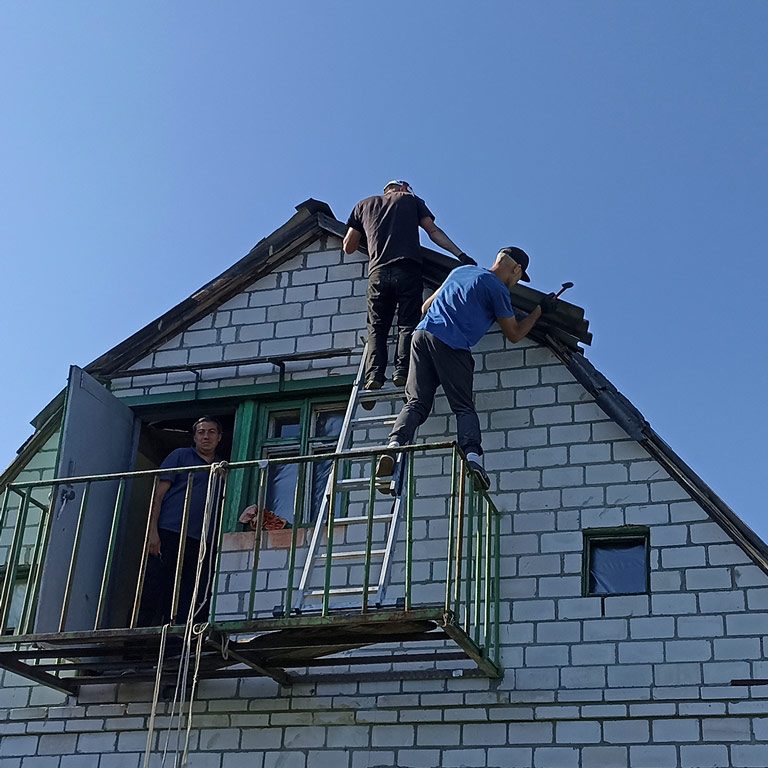
— You are one of the most active volunteers in the B50 team, repairing roofs. Once I watched you work at 57 Sadova Street in Moshchun. You were repairing the roof with one foot on a ladder and the other on the balcony. It seems as if you are fearless! Aren’t you afraid of heights for a second?
— I was standing on that old balcony for a reason! I checked it out first, because I’m a technical person.) I even asked my grandmother who built that balcony.
I have a fear of heights in general. For example, if I stand on the 25th floor and look down, it gets a little cold inside. But on the 10th or 15th floor, I have no such fear.
I’m not a professional in terms of roofs, I’m an architect who designs, but sometimes I’ve found myself doing it myself. If you look globally, the reason is probably that I was born and raised in the countryside. I used to climb trees very often, and I never had any fear when I was sitting high on a branch and looking down) I am familiar with the tool. As a student, I worked at a construction site. Therefore, a combination of many factors comes into play.
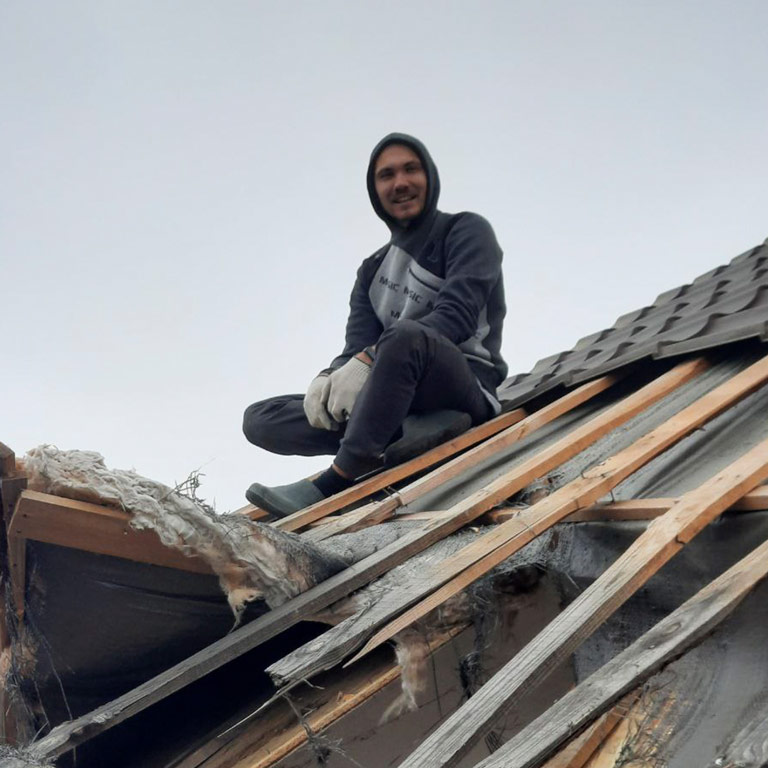
— As an experienced volunteer roofer, could you tell us what safety rules should be followed when helping out?
— Before climbing on the roof, you need to assess your strength. If you are not sure, it is better not to do it. You also need to follow safety rules. When you climb, you need to watch where and what you are leaning on, where you put your foot, so you don’t accidentally fall. There should be maximum safety rules to protect yourself.
Ideally, if you have some kind of insurance. When I helped on the roof several times, I climbed with insurance. We would tie a rope, fix it, and make sure to check what we were hooking to, how well it was holding. I had to check how firmly, reliably, and correctly I had fixed the harness. So when you fall, such rules will ensure that you will remain intact.

— You are an architect by profession and design buildings. How did you realize that this is what you wanted to do?
— At school, I couldn’t make up my mind: I didn’t know where I wanted to go. Going into architecture was more of a push from my mom, but I didn’t mind. Somewhere deep in my soul, this specialty resonated with me.
Architecture is very interesting to me. I haven’t traveled much, but no matter what cities I’m in, I always look at buildings, architecture, styles, and pay attention to urban planning.
I like the process of creation the most. Seeing what you have invented and seen in your head come to life is probably the most interesting thing about the profession. That you can create something of your own. Something that will remain after you. You can design a building or an object, and it will stand much longer than you will live. Now you are gone, and your creation continues to live, and you live with it.
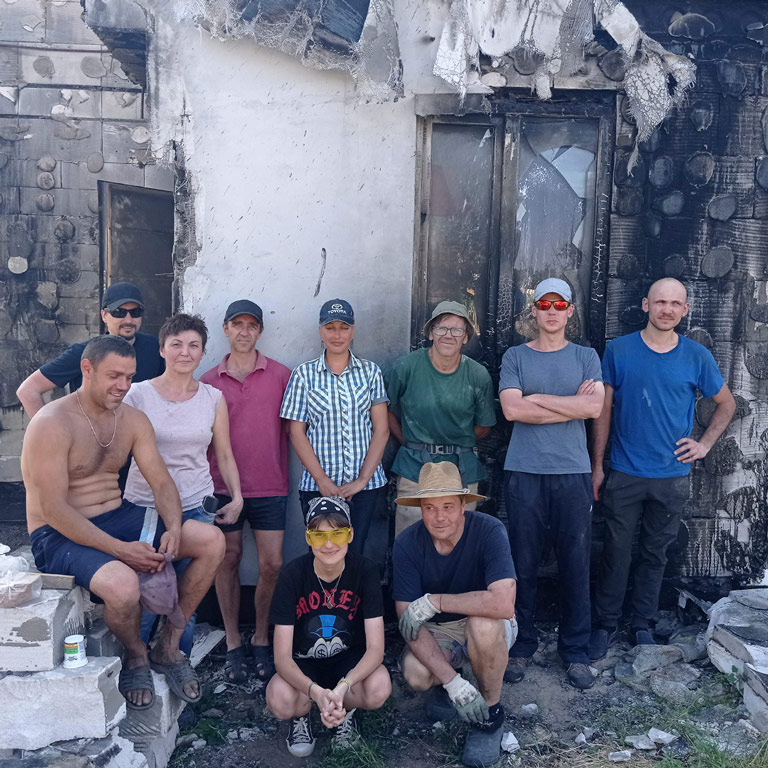
— What objects have you already created? What will live after you?
— For me, there is a very important and significant object – the Kyiv Okhmatdyt hospital (National сhildren’s specialized hospital – ed.). It’s a new building located on Peremohy Avenue. My friend and I have developed almost all the project documentation, and there is also an assembly hall, and I designed the entire interior: lighting, lamps, ceiling. I also made a prayer room there.
It was cool to see when I came to that room with bare walls and windows. It all starts with having a plan. You begin to “sketch” it out, how you can do some interesting things. There were a lot of nuances in the process! The ceiling I made was of a very different shape. There are quite deep recesses where the lamps were placed. There are also “drops” in which engineering communications are hidden. It was a very extraordinary approach.
In my case, life happens so that I am not only engaged in architecture, but also in engineering. This was one of the experiences of developing an interior design.

Just before the full-scale invasion began, I was designing a dormitory that was part of a hospital designed by my architectural firm. It was supposed to be the largest regional referral hospital in Ukraine in Kramatorsk! The hospital was to have a dormitory and several other buildings (a hotel, a residential complex), and everyone in the architectural office was responsible for their own area. I was designing the dormitory, but I didn’t finish it, and it remained on paper for now.
When the Great War broke out, my architectural firm collapsed and I had no work. I didn’t quit, and now I’m looking for some opportunities to make money. For example, I do 3D modeling, engineering (not architecture), and worked as a foreman. Currently, there is not much work for architects. Perhaps this will change after the war.
— Of course, architects will be needed, because after the Victory, reconstruction will certainly begin…
— Here is a question for our government: will it somehow stimulate the development of Ukrainian architects? Will it order a bunch of projects and people to work from abroad? There must be some kind of action plan aimed at the domestic market and Ukrainian architects.
You can build the whole country at the expense of some foreign projects, but this will not be an impetus for Ukrainian architecture. A striking example is Germany. After the Second World War, it hired foreign architects, but gave local specialists the opportunity to realize themselves as much as possible, and created a competitive system: open competitions were organized in which many architects participated, and the best proposals were selected. It would be great if something like that was implemented here.

— What is your architectural dream? What would you like to build?
— I have a global dream for Ukraine – to make something like London City, to build a small “country within a country”.
This is the concept of a small piece of land where special laws that differ from the national ones are in effect. There may be no income reporting on this territory (roughly speaking, it is an offshore zone). This makes such a piece of land a very tasty morsel for global corporations. That’s why when countries create such things, they become popular. But there is one caveat: there must be a very strong judicial system.
First, it will give a very strong boost to the economy. Because where there is London City, there is a lot of money. So the economy is high, the country makes money on it, and people are not poor. If Kyiv City appeared in Ukraine, I would like to build a skyscraper or a hundred-story skyscraper. There are very tall buildings in New York, and I would like to do something like that.
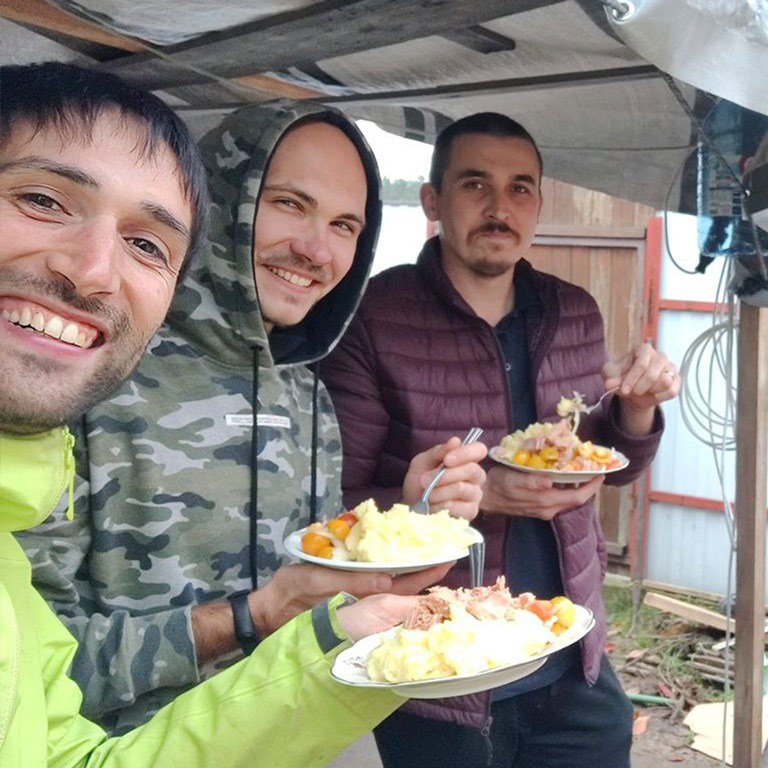
— How do you see the future of Ukraine?
— This is a difficult question, actually. I think I have critical thinking and I’m more of a realist. If there is a situation, I look at it with hope for the best, but also with the understanding that we need to prepare for the worst. It all depends on when the war ends…
If the war continues, unfortunately, I see the following picture: the standard of living in Ukraine is very, very low. There will be a lot of problems, I can’t find another word.
If the war is over, I see Ukraine as a very badly beaten country with a very poor standard of living. I hope that the country will rebuild. I hope that the world will help, perhaps there will be some kind of Marshall Plan. In this case, in some ten years, the standard of living will become better. There is hope that people will become intelligent, start to take everything into account and analyze. Perhaps they will not vote for people who will give them a kilogram of buckwheat and increase their wealth. They will vote for those who have improved the lives of ordinary people during their term.
Над інтерв’ю працювали:
- Coordinator – Anna Norynska
- Interviewer – Nataliia Hryniuk
- Transcribers – Aliona Gogus, Oleksandr Tishura
- Editor – Kateryna Lehka
- Translator – Anastasiia Lypchak


